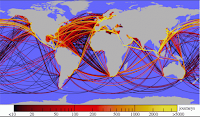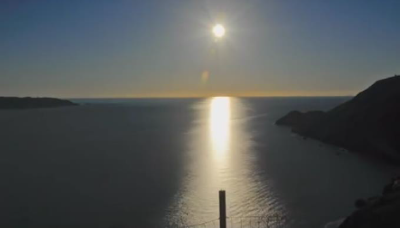Contents 31-40
31. Dubay quotes a Flat Earth believer who believes that the rotating Earth would cause a tremendous wind

“Quoting “Zetetic Cosmogeny” Thomas Winships states: “Let ‘imagination’ picture to the mind what force air would have which was set in motion by a spherical body of 8,000 miles in diameter, which in one hour was spinning round 1,000 mph, rushing through space at 65,000 mph and gyrating across the heavens? Then let ‘conjecture’ endeavor to discover whether the inhabitants on such a globe could keep their hair on? If the earth-globe rotates on its axis at the terrific rate of 1,000 miles an hour, such an immense mass would of necessity cause a tremendous rush of wind in the space it occupied. The wind would go all one way, and anything like clouds which got ‘within the sphere of influence’ of the rotating sphere, would have to go the same way. The fact that the earth is at rest is proved by kite flying.”
32. Gravity strong enough to hold oceans and atmosphere to Earth would stop birds, bugs and planes from flying

“If “gravity” is credited with being a force strong enough to hold the world’s oceans, buildings, people and atmosphere stuck to the surface of a rapidly spinning ball, then it is impossible for “gravity” to also simultaneously be weak enough to allow little birds, bugs, and planes to take-off and travel freely unabated in any direction.”
33. Gravity strong enough to hold oceans to a spherical Earth would stop fish swimming

“If “gravity” is credited with being a force strong enough to curve the massive expanse of oceans around a globular Earth, it would be impossible for fish and other creatures to swim through such forcefully held water.”
34. Dubay claims that ship captains never use spherical trigonometry

“Ship captains in navigating great distances at sea never need to factor the supposed curvature of the Earth into their calculations. Both Plane Sailing and Great Circle Sailing, the most popular navigation methods, use plane, not spherical trigonometry, making all mathematical calculations on the assumption that the Earth is perfectly flat. If the Earth were in fact a sphere, such an errant assumption would lead to constant glaring inaccuracies. Plane Sailing has worked perfectly fine in both theory and practice for thousands of years, however, and plane trigonometry has time and again proven more accurate than spherical trigonometry in determining distances across the oceans.”
35. “Dubay claims that lines of latitude do not converge the further south they are and that captains travelling in the southern hemisphere assuming the Earth is a sphere navigate incorrectly

“If the Earth were truly a globe, then every line of latitude south of the equator would have to measure a gradually smaller and smaller circumference the farther South travelled. If, however, the Earth is an extended plane, then every line of latitude south of the equator should measure a gradually larger and larger circumference the farther South travelled. The fact that many captains navigating south of the equator assuming the globular theory have found themselves drastically out of reckoning, more so the farther South travelled, testifies to the fact that the Earth is not a ball.”
36. Captain James Clark Ross’s (1800-1862) had difficulty navigating accurately in Antarctica

“During Captain James Clark Ross’s voyages around the Antarctic circumference, he often wrote in his journal perplexed at how they routinely found themselves out of accordance with their charts, stating that they found themselves an average of 12-16 miles outside their reckoning every day, later on further south as much as 29 miles.”
37. Lieutenant Charles Wilkes (1798-1877) had difficulty navigating accurately in Antarctica

“Lieutenant Charles Wilkes commanded a United States Navy exploration expedition to the Antarctic from 1838 to 1842, and in his journals also mentioned being consistently east of his reckoning, sometimes over 20 miles in less than 18 hours.”
38. Someone speculates that the loss of the HMS Challenger in the southern hemisphere in 1845 may have been because of navigation errors

“To quote Reverend Thomas Milner, “In the southern hemisphere, navigators to India have often fancied themselves east of the Cape when still west, and have been driven ashore on the African coast, which, according to their reckoning, lay behind them. This misfortune happened to a fine frigate, the Challenger, in 1845. How came Her Majesty’s Ship ‘Conqueror,’ to be lost? How have so many other noble vessels, perfectly sound, perfectly manned, perfectly navigated, been wrecked in calm weather, not only in dark night, or in a fog, but in broad daylight and sunshine - in the former case upon the coasts, in the latter, upon sunken rocks - from being ‘out of reckoning?’” The simple answer is that Earth is not a ball.”
39. An Almanac published in the 1870's stated a distance between Sydney and Nelson that disagrees with current maps

“Practical distance measurements taken from “The Australian Handbook, Almanac, Shippers’ and Importers’ Directory” state that the straight line distance between Sydney and Nelson is 1550 statute miles. Their given difference in longitude is 22 degrees 2’14”. Therefore if 22 degrees 2’14” out of 360 is 1550 miles, the entirety would measure 25,182 miles. This is not only larger than the ball-Earth is said to be at the equator, but a whole 4262 miles greater than it would be at Sydney’s southern latitude on a globe of said proportions.”
40. Dubay gives an incorrect distance between Cape Horn and Melbourne and uses that to "prove" that the Earth is not the size scientists say

“From near Cape Horn, Chile to Port Philip in Melbourne, Australia the distance is 10,500 miles, or 143 degrees of longitude away. Factoring in the remaining degrees to 360 makes for a total distance of 26,430 miles around this particular latitude, which is over 1500 miles wider than Earth is supposed to be at the equator, and many more thousands of miles wider than it is supposed to be at such Southern latitudes.”



Comments
Post a Comment